1991 Honda NSX
The List Senna superfan tries the car his hero helped to develop: Honda’s NSX. Eddie wanted to drive the supercar developed by Ayrton Senna so badly that he drove for 12 hours to try one out… Words: Sam Dawson. Photography Neil Fraser.
The List Your dream drive made real Senna superfan meets Ayrton’s vision – the Honda NSX
‘It’s surpassed all my expectations’
How far would you go to drive your dream classic? ‘This is as far south as I’ve ever been in the UK,’ muses Scottish Classic Cars reader Eddie Ritchie as he emerges from his Infiniti outside HPC Classics in Eastbourne. ‘I drove all the way from Dundee yesterday – it took me 12 hours.’
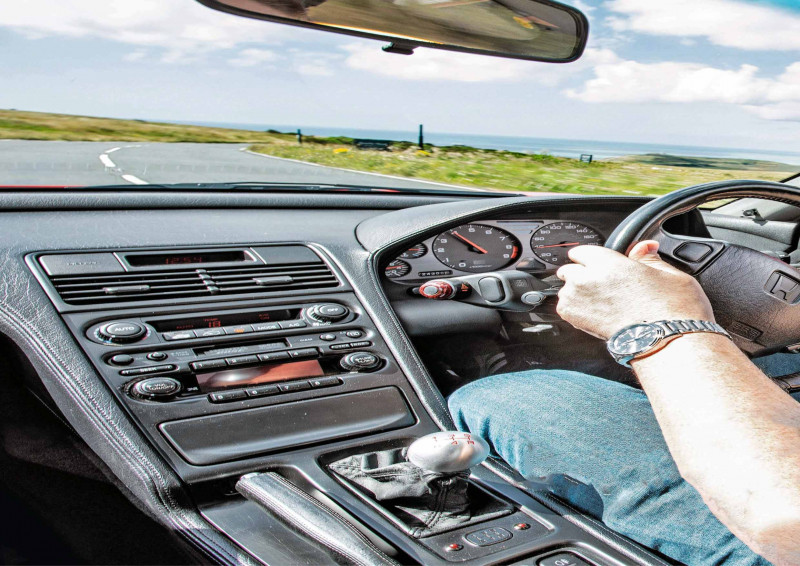
But what car has Eddie piled on the miles in order to sample? He reveals a clue sitting in the Infiniti’s boot – an accurate replica Ayrton Senna helmet, complete with Nacional branding. He digs out his phone and quickly finds a video of Senna at ten tenths round Suzuka in the car he’s come here to drive – the Honda NSX.
‘I used to work at a Honda dealership. The dials remind me of the Accord Type-R’s. Everything is so clear and easy to understand’
‘People hated him back then,’ says Eddie as Senna’s tassled loafers dance on the pedals and the car four-wheel drifts through Degner. ‘His reputation changed after he died; everyone was suddenly a Senna fan, but he was unpopular for doing anything to win and taking extraordinary risks in the era of the Mansellmaniacs. But for me, he was always the greatest. His driving ability was just otherworldly. He made every race exciting – even his qualifying sessions were mesmerising to watch. And the Honda NSX was part of his legacy.’
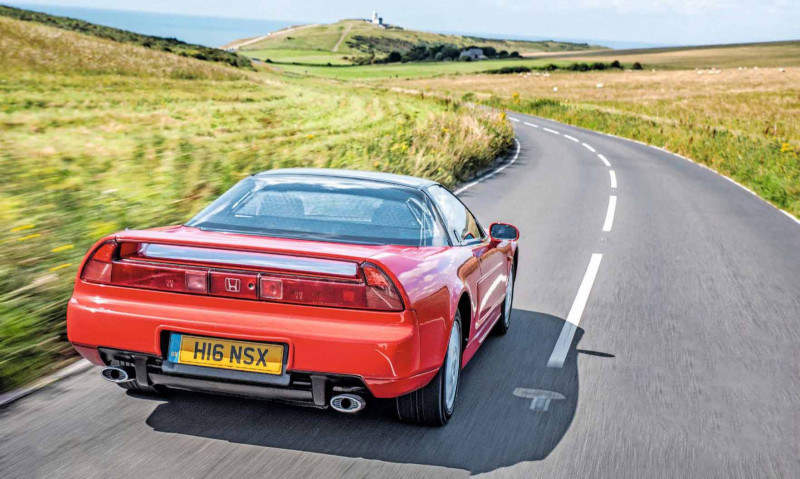
HPC Classics’ Chris Lowe surprises Eddie as he slinks up behind him in the NSX, its low, long, sleek silhouette hiding behind a hedge before emerging, and its V6 spinning almost silently at low revs, exhausts barely murmuring.
‘I didn’t expect it to be so quiet!’ says Eddie as he paces around the NSX. It’s in the specification that Senna helped create – a coupé with a manual gearbox. The concept was diluted to give it more mass-market appeal with the targa-roofed NSX-T and an optional automatic gearbox, and later hardened into the uncompromising track-orientated NSX Type-R. ‘I actually used to work at a Honda dealership,’ says Eddie as he opens the long driver’s door and settles into the fighter-jet-like cockpit, its seating dramatically separated by a high-set central spar. ‘The dials remind me of the early Accord Type-R’s. Everything in here is so clear and easy to understand. The clutch is smooth and light. It’s quiet with the windows up. To be honest, it’s so tame-feeling that you wouldn’t think it’s a supercar at all. The clutch is what gets me the most actually. The one on my Rover P6 nearly breaks your leg!’
I’m starting to wonder whether the NSX might be a bit of a letdown as Eddie meanders it through suburban Eastbourne in search of more dramatic coast roads, noting not indicators of its mighty performance potential, exotic mid-engined layout or futuristic styling, but rather the aspects that make it seem almost mundane. ‘The brakes are a wee bit soft, perhaps not as reassuring as I was hoping, but it is a 30-year-old car,’ he says. ‘I thought the steering would be power-assisted but I guess it’s better for feel. And the visibility is excellent, especially compared to something like a Countach or Pantera. It’s narrower than I was expecting too; it’s so easy to drive in traffic. The high-sidewall tyres on the 15-inch wheels give a nice ride and there’s even a big boot – my old Ford Escort RS2000 was more bother than this.’
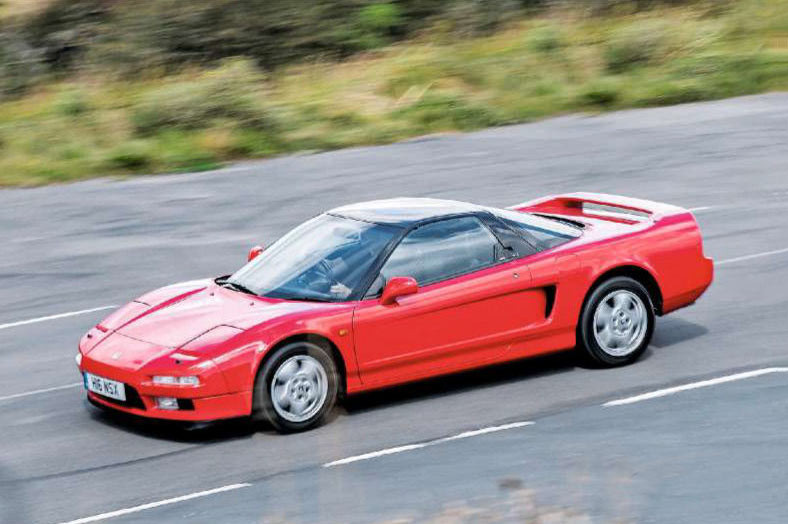
Suddenly traffic and urban speed limits give way to empty, high-speed Tarmac on one of the steep roads corkscrewing out of town onto the South Downs and Eddie puts his foot down. The NSX’s demeanour changes immediately. The polite, hushed purr behind the seats graduates into a high-pitched scream as the rear crouches slightly, the rear tyres bite the road and the car hurtles towards the horizon’s vanishing point. The grin of general satisfaction on Eddie’s face becomes a gratified beam. ‘It sounds good over 3500rpm, doesn’t it?’ he says, laughing.
‘Then again, these Honda VTEC engines don’t come into their own until 6000rpm. I’m not sure I’ll be getting there today, but I don’t care. That engine is a thing of beauty. My MGF has VVC, Rover’s take on the same concept, but it’s nowhere near as smooth as this in the way it delivers its power at high revs.’ VTEC – Variable valve Timing Electronic Control, which shifts the camshafts at higher revs so the valves are operated by a set of more aggressively-profiled lobes – started life on Honda’s superbikes before making the transition to cars. The result was the kind of power boost that allowed smaller engines to compete with big-block supercars but without the awkward laggy behaviour and spongy throttle response of a turbocharged engine. As Eddie soars the low-flying NSX along the clifftops towards Beachy Head his thoughts turn back to Senna. ‘In that video at Suzuka, he keeps the engine in the VTEC zone all the way round the track, changing up at 8000rpm,’ he says. ‘I can’t help but think that it’s one of the characteristics that Senna ensured this car had. When Senna and Alain Prost were teammates at McLaren, at the same time that the NSX was being developed and when the F1 team used Honda engines, Senna always used to use more fuel than Prost in the same design of car. Prost was a smoother driver but Senna would keep his foot down harder for longer. He was Soichiro Honda’s favoured driver. He ensured that Senna took Honda power with him when he left Lotus for McLaren.’
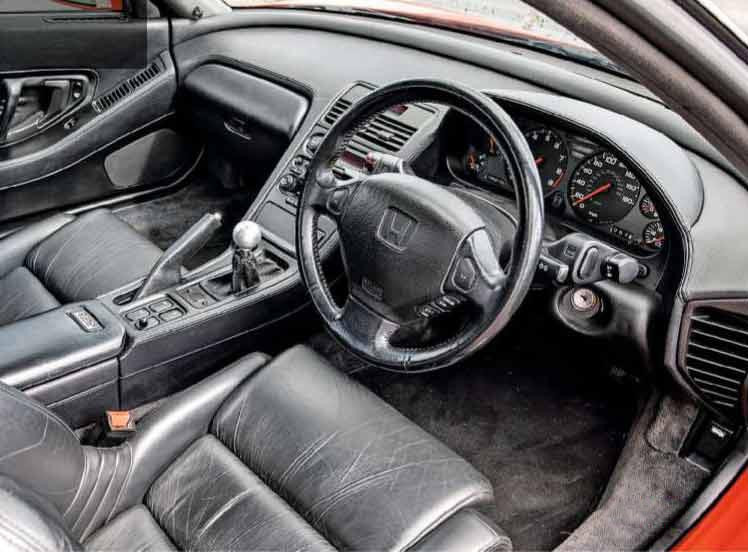
Confident with the throttle response and the V6’s might, Eddie starts to explore the NSX’s handling envelope, entering sun-baked S-bends with increasing vigour as we near Birling Gap. ‘It’s impressively neutral,’ he reports. ‘You barely have to slow down at all. Those 15-inch wheels look so small in a modern context, so easy to overwhelm, but the tyres cling on so well. That unassisted steering, which I actually thought was the only non-user-friendly aspect of the car when in town, a bit too heavy for its own good, is actually incredibly tactile. You can almost feel individual pebbles in the Tarmac through it. And the body stays so level.
‘I know the reason for that, actually. Senna’s main recommendations when developing the NSX prototype involved the handling and structure. He felt that it seemed too fragile and that the car – as a monocoque and in its suspension – needed making 50 per cent stiffer. This sounds like relatively little and it’s led a lot of people to assume Senna’s involvement in the car was almost a rubber stamp of approval at the end of the process. But I work in the car industry; the changes involved in making a car 50 per cent stiffer must have been substantial. You can sense Senna’s personal influence when you feel it jiggle over bumps or the way that the tyres’ high sidewalls compensate for the loss of ride quality brought about by the suspension stiffness. ‘Bear in mind that it was the first productionised aluminium monocoque and it’s an even greater achievement. Gordon Murray – who designed Senna’s McLaren F1 cars – owned one and covered 75,000 miles in it, later saying that its design and user-friendliness influenced the McLaren F1. That was originally supposed to use a Honda engine too, come to think of it. So I like to think of the F1 having a bit of NSX DNA in a way.’
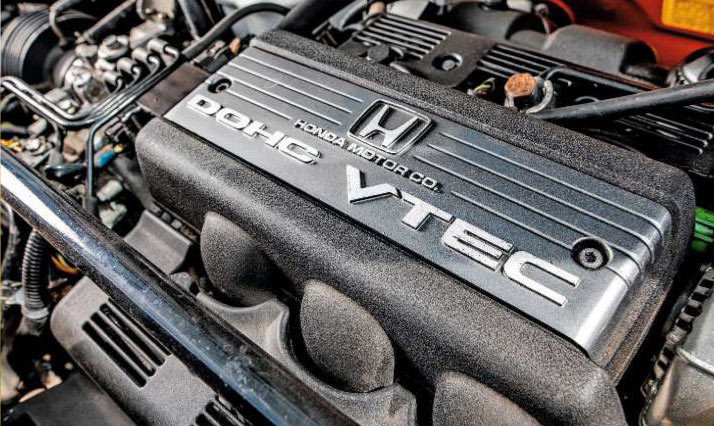
Eddie parks the NSX up in a gravelly layby and takes in its lines. ‘I haven’t really thought about this before but it’s so well proportioned,’ he says. ‘And yet Honda’s stylists did their own thing rather than copying Ferrari. The way that the roof sits on it like a fighter jet’s cockpit, all black metal or black-tinted glass, and the way it balances the overall shape, is masterful. And then there’s attention to detail like that extra windscreen between the cockpit and the engine bay to isolate the engine noise. And I think it was the first Honda to have the red badge that would later signify a Type-R. The sign of a race-bred Honda.’
Not copying Ferrari was also important given the shockwaves that the NSX sent through the performance car world in 1990. Ferrari was fresh from launching the old-school 348 complete with cantankerous gearchange and unforgiving cornering manners. Similar things could have been said about the antiquated Porsche 964 and the cramped and fragile Lotus Esprit X300. With the NSX, Honda built a machine that managed to be both viceless and uncompromised when pushed to the limit on track, yet user-friendly in a way that its rivals simply couldn’t manage. Porsche’s idea of a user-friendly supercar was the heavy 928. Ferrari’s 456GT was two years away.
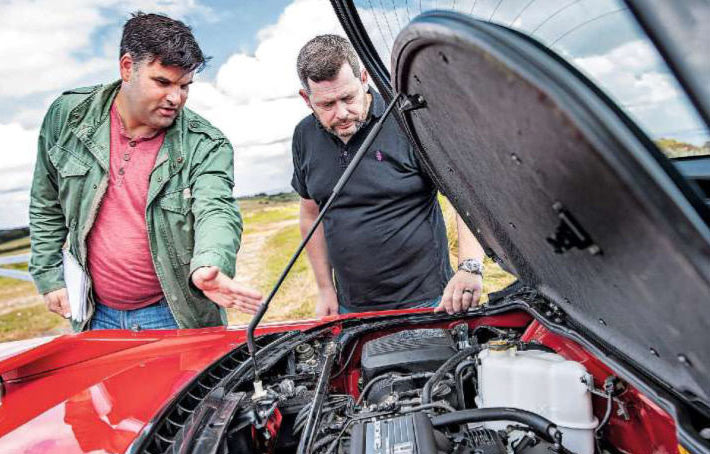
Eddie jumps back into the NSX, powers it through a tight hairpin and spurs it onwards towards the sweeping moorland roads near Jevington. Confidence built, he’s pushing it a little harder in its lower gears, seeing how close he can get to Senna’s VTEC-driven upchanges at Suzuka more than 30 years ago. Acceleration feels relentless as we briefly nudge 7000rpm, the true supercar awakening somewhere just north of 3000rpm when the V6 stops whispering and starts howling. ‘What’s most impressive is how analogue it all is – there are electrics here and there keeping an eye on things, but ultimately it’s all you as the driver doing it,’ says Eddie. ‘And yet it’s so smooth it flatters you – there’s no lag in the throttle or jolt in the drivetrain.’
Grip from the tyres lessens if you push it really hard into a corner but the beautiful neutrality of its cornering attitude as insisted upon by Senna remains, offering you similarly progressive throttle-steer if you want it. That moment really does feel like Senna letting you in on a little secret, a carefully engineered state of affairs that will let you feel briefly like an F1 driver. And yet shift up a gear and back off the throttle and it’ll whisper as quietly at 70mph as it did at 30, the boot and ample legroom making it a decent grand tourer as well as the complete supercar.
‘It’s surpassed all my expectations of it,’ says Eddie as he brings the NSX to rest at HPC. ‘It’s been wonderful. Would I have one? 100 per cent yes. Was it worth driving 12 hours for? Absolutely! People talk about the Porsche 911 as the supercar you can use every day, but for me, it’s this. You can tell it’s going to be as dependable as a Civic. You’re not losing out on anything you could want from a car – usability, desirability, reliability – anything. ‘It does all the things that supercars usually have to be compromised in order to do, without actually compromising as a supercar, and that’s seriously impressive.’
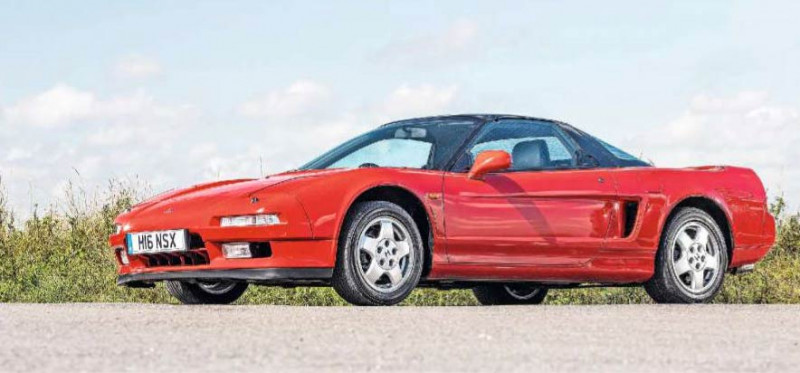
Then Eddie touches on something altogether more powerful as he poses for one last photo. ‘Driving this car has helped me get my classic mojo back,’ he says. ‘I think I was almost starting to fall out of love with driving but this NSX has made me remember how much I love old cars. When I get back to Scotland, I’m going to start recommissioning my Rover P6 again. Thank you Classic Cars.’
‘It’s helped me get my classic mojo back’ — NSX drive has inspired a resto — of a Rover…
‘You can sense Senna’s personal influence when you feel it jiggle over bumps
1991 Honda NSX
- Engine 2977cc transverse V6, dohc per bank, Honda PGM-FI electronic fuel injection
- Max Power 270bhp @ 8000rpm
- Max Torque 210lb ft @ 5300rpm
- Transmission Five-speed manual, rear-wheel drive
- Steering Rack-and-pinion
- Suspension Independent, aluminium double wishbones, coil springs, telescopic dampers, anti-roll bar all round
- Brakes Servoassisted discs front and rear, ABS
- Weight 1365kg
- Performance Top speed: 168mph
- 0-60mph: 5.5sec
- Cost new £55,000
- CC Price Guide £25,000-£47,500
It takes time to trust it, but the handling is viceless compared to period rivals. Eddie took this superbike-inspired powerplant to an otherworldly 7000rpm Sam and Eddie discuss the VTEC V6’s camshaft-shifting high-revving trickery
F1 technology and Ferrari-beating poise meets Civic reliability in the Honda NSX Extra window aids the NSX’s sense of grand-touring refinement and high-speed civility
The List Honda NSX
‘It reminds me of an Accord!’ — Eddie finds the NSX cockpit immediately familiar Ayrton Senna superfan Eddie Ritchie can’t resist driving the car developed by his idol.
EDDIE’S DREAM DRIVE LIST
Ferrari 288GTO
‘I read CAR aged 12 in 1985 and was blown away by it.’
Simca 1000
‘My gran had one. Embarrassed me as a kid but I see its charm now.’
Honda NSX
‘Developed by my all-time hero, Ayrton Senna. Need I say more?’
Fiat 130 Coupé
‘Styled like the cars I drew on my school books, yet oozing class’
Ford RS200
‘Group B rallying was a huge part of my childhood. Seeing these in competition was awesome.’
Audi 200 Quattro 20v
‘I have owned 80s and 90s, but the 200 was exquisite.’
De Tomaso Pantera
‘I had a white toy one with an orange engine cover when I was a kid, always promised myself one.’
Opel GT
‘When I was an apprentice painter at a car dealer, the owner’s son had one. It really intrigued me.’
BMW M5 (E28)
‘I once had a 520i but this was the car I wanted. Absolute perfection.’
Jensen Interceptor
‘Stylish, and pure hairy-chested muscle. Awesome.’
EDDIE’S CAR CV
Eddie’s own cars have hailed from closer to home
1972 ROVER P6 3500S
‘I still own it after 14 years. Originally bought by Sir Charles Pereira, who was a hydrologist, and director of East Milling in Kent.’
1997 MGF VVC
‘In Amaranth, this was a Japanese export model that for whatever reason was never sent out there. Fun to drive, the best colour for them, and massively underrated.’
1980 FORD ESCORT RS2000 CUSTOM
‘I owned it in 1986. I recently found its service book when moving house and tracked it down to Ireland where I’m now in contact with the new owner. It’s living a pampered life.’
1972 TRIUMPH GT6
‘A lovely car, although I was a bit too large-framed to be entirely comfortable in it. A great experience to own nevertheless.’
1983 FORD ESCORT RS1600i
‘The one car I really regret getting rid of. More than the sum of its parts and aesthetically perfect right down to its Scheel seats and fourspoke steering wheel.’


